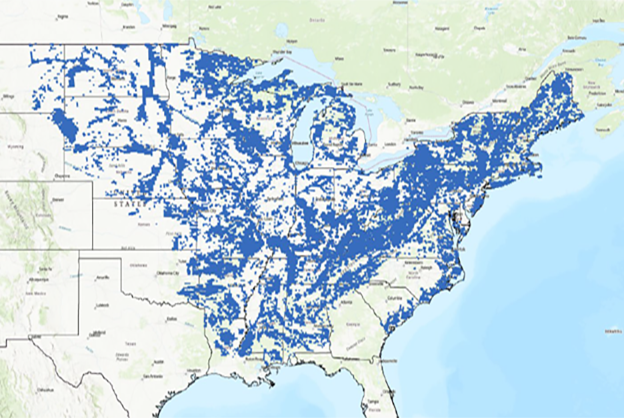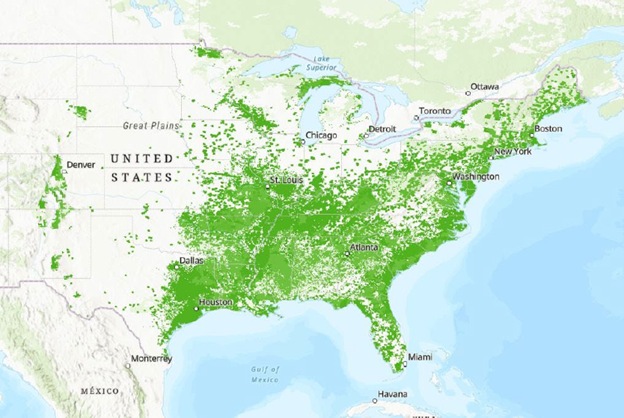Over the years there have been many changes to how bat species are protected both at the federal level and the state level. WSSI is staying on top of the changes to help our clients through this confusing time.
Interim Consultation Framework for Northern Long-Eared Bat Extended
On April 8, 2024, an updated version of the Interim Consultation Framework (ICF) for the northern long-eared bat (NLEB) was published by USFWS which indicated that the ICF is now valid through November 30, 2024 (as opposed to the original March 31, 2024 expiration date). No other changes have been made to the ICF. The extension of the ICF means that any completed consultation for NLEB will now remain valid through this date, or until any new guidance becomes effective.
Draft Guidance to Replace ICF
Draft consultation guidance and tools were published by USFWS on April 1, 2024 which will be used for both NLEB and TCB when they go into effect in Summer 2024. The public can provide feedback on the draft guidance before May 1, 2024 by emailing [email protected].
The Draft Northern Long-eared Bat (NLEB) and Tricolored Bat (TCB) Voluntary Environmental Review Process for Development Projects (Consultation Guidance) is one of the tools developed by USFWS. This Consultation Guidance will be applicable to the TCB if it’s listed and will replace the ICF in its entirety once finalized. The draft consultation guidance lists many of the actions that will result in a “May Affect” determination to either species as well as Minimum Conservation Measures that can be implemented for projects. The important take-away from this draft guidance is that, in most cases, the time of year restriction on tree clearing for NLEB (and TCB, if listed) will likely be reduced to the pup season (May 15 – July 31 in Virginia and Maryland); currently the TOYR is April 1 through November 14.
The USFWS also developed a combined species range-wide Determination Key for the NLEB and TCB. Currently this is only available on the USFWS IPaC-Beta website for preview and testing only, and the final DKey is expected to go into the production version of IPaC later this summer.
Separate draft guidance for Wind and Sustainable Forest Management projects have also been published.
Updated Summer Survey Guidelines & Species Range Maps
On March 29, 2024, the USFWS published the updated 2024 Range-wide Indiana Bat and Northern Long-eared Bat Survey Guidelines. Updates to the survey guidelines include:
- Guidance for assessing and surveying bridges and culverts
- An updated bat activity table, which includes the hibernation, summer occupancy and pup seasons for the Indiana bat (IBAT), northern long-eared bat (NLEB), and tricolored bat (TCB) species ranges
- The bat activity table references a shorter summer occupancy range which could indicate a shorter time of year restriction
- Information regarding suitable summer habitat for TCB.
Separately, the species range maps for both the NLEB and TCB were updated by USFWS which resulted in a more refined range for each species.


